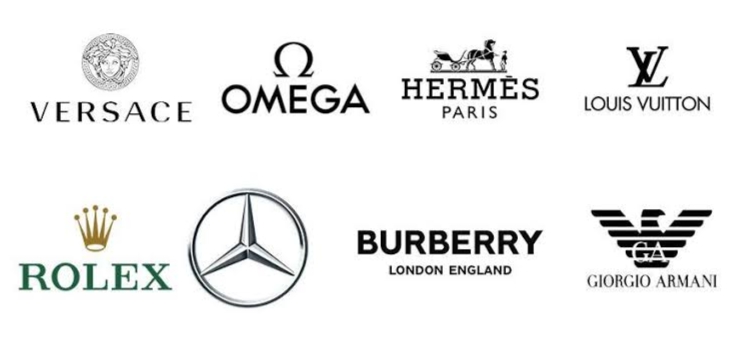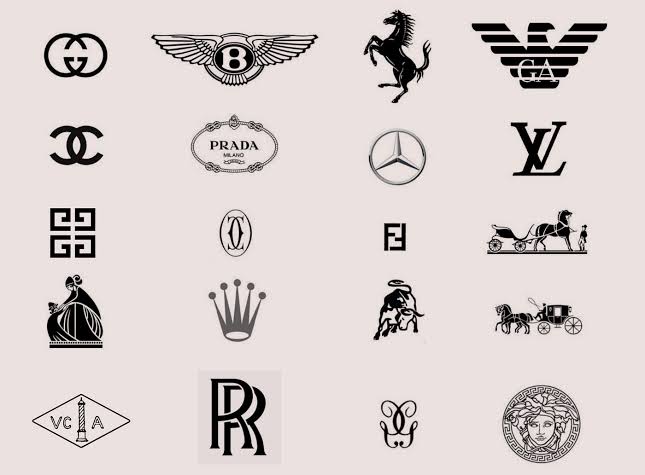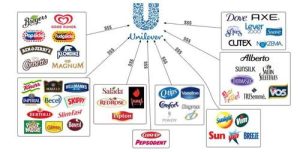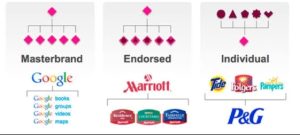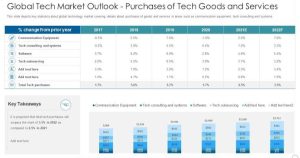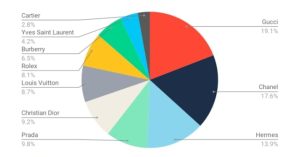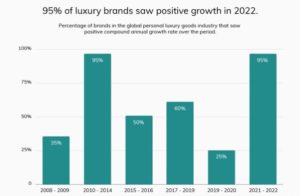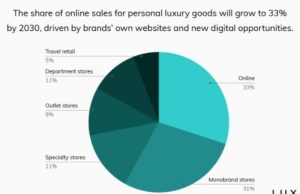The luxury brand hierarchy categorizes brands into levels based on prestige, quality, and exclusivity. This ranking influences consumer perception and brand value.
The concept of luxury brand hierarchy is a reflection of social distinctions and personal identity through the lens of consumer goods. Top-tier luxury brands like Louis Vuitton, Hermès, and Chanel sit at the pinnacle of this structure, coveted for their craftsmanship and storied histories.
These marques command higher prices and offer unparalleled prestige. The next tier includes brands such as Gucci and Prada, which blend high-quality products with trendsetting designs. More accessible luxury brands, like Michael Kors and Coach, provide a touch of luxury at more moderate price points. Understanding this hierarchy helps consumers navigate the status-linked world of luxury items and enables brands to position themselves in the competitive market. This deliberate structuring is not only key for marketing purposes but also for maintaining the allure and desirability that defines the luxury industry.
Introduction To Luxury Brands And Status Symbols
Imagine a world where what you own says who you are. In the realm of luxury brands and status symbols, this is reality. These items dazzle, whispering tales of success, prestige, and exclusivity. Behind every designer label, a story of tradition, quality, and opulence unfolds. As we delve into the hierarchy of luxury brands, we uncover the fascinating interplay between historic significance and contemporary social standing.
The Concept Of Luxury: Historical Perspective
Long ago, kings and queens adorned themselves in silks and jewels. Finely crafted goods were reserved for the elite. This history now shapes our view of luxury. Luxury brands still carry an air of royalty and distinction. Each piece serves as a nod to rich traditions and artistic prowess.
Status Symbols And Social Significance
Status symbols serve as a social language. They speak of one’s place in society. Designer handbags, watches, and cars are not just objects. They are badges, each telling a story of achievement and social rank.
The Psychological Appeal Of Luxury Items
Why do people yearn for luxury? It’s more than just the soft leather feel or a well-cut diamond’s sparkle. Owning luxury items offers deep psychological satisfaction. They make people feel successful and important. They are treasures that suggest, “I’ve made it.”
The Architecture Of Luxury Brand Hierarchy
The landscape of luxury brands is as intricate as it is glamorous. It’s more than just a label; it’s a testament to a brand’s status, promise, and identity. This architecture of luxury brand hierarchy distinguishes brands and helps consumers identify the level of luxury they desire.
Defining The Luxury Brand Hierarchy
The luxury brand hierarchy categorizes brands based on their market position. This hierarchy is not static. It evolves with market trends, consumer perceptions, and brand performances.
Criteria For Ranking: Exclusivity, Quality, And Heritage
Ranking in the luxury brand hierarchy depends on several factors:
- Exclusivity: High-end brands limit availability, enhancing desirability.
- Quality: Superior materials and craftsmanship define luxury items.
- Heritage: Brands with a rich history often occupy top spots.
From Ultra-luxury To Accessible Premium Brands
The spectrum ranges from ultra-luxury to accessible premium segments. Ultra-luxury brands exude rarity and prestige. Accessible premium brands offer a taste of luxury at a lower price point.
Case Studies: The Positioning Of Renowned Brands
Renowned luxury brands each hold a unique spot in the hierarchy. Let’s delve into a few examples:
| Brand | Category | Defining Characteristic |
|---|---|---|
| Hermès | Ultra-Luxury | Exceptional craftsmanship |
| Chanel | Ultra-Luxury | Iconic heritage |
| Coach | Accessible Premium | Wider availability |
Global Influence And Market Dynamics
The realm of luxury brands extends far beyond mere products. It evokes a universe of prestige, allure, and status that transcends global markets. Understanding the interplay between cultural nuances and economic factors unveils a complex hierarchy influenced by powerful marketing strategies and celebrity endorsements. This mosaic of brand perception drives the dynamics of the luxury market worldwide.
Cultural Impact On Brand Perception And Hierarchy
Culture shapes luxury brands’ standings.
- Diverse societies view luxury differently.
- Brands adapt to local values and beliefs.
- Status symbols vary across cultures.
Such adaptation can elevate or demote a brand’s rank in certain areas. The perception of exclusivity and heritage can impact a brand’s global standing.
Economic Factors And Brand Hierarchies In Different Regions
Economic climate dictates luxury consumption.
- Higher-income regions often yield more luxury sales.
- Emerging markets present new growth opportunities.
Brands must navigate these economic waters to maintain their status. Price and access play crucial roles in how different regions perceive luxury hierarchy.
Marketing Strategies That Shape The Luxury Hierarchy
Effective marketing propels brand status. Storytelling and heritage emphasize a brand’s prestige. Here’s how marketing can rearrange the luxury ladder:
- Digital campaigns bring luxury to the tech-savvy.
- Exclusive events foster a sense of belonging.
- Limited editions create urgency and desire.
Digital presence must align with a brand’s core values to maintain an esteemed position.
The Role Of Celebrity Endorsements And Influencer Marketing
Celebrities and influencers wield power in brand rankings.
| Celebrity Endorsements | Influencer Marketing |
|---|---|
| – Implies a high level of prestige. | – Relates to digital-first audiences. |
| – Often incites media buzz. | – Encourages direct engagement. |
Together, they mold public perceptions, shaping the luxury hierarchy through visibility and relatability.
Consumer Behavior And Luxury Brands
Understanding consumer behavior is crucial for luxury brands. It’s a factor in success or failure. High-end shoppers are not just buying a product. They are selecting a piece of prestige and exclusivity. The way they interact, think, and buy is unique.
Psychographic And Demographic Profiles Of Luxury Consumers
Luxury consumers come from varied backgrounds. Yet, they share common traits. Their psychographic profiles often display a love for quality and prestige. Demographics can include a range of ages, but income levels are usually high.
- High income means more spending power for luxury.
- Education often indicates refined taste.
- Lifestyle choices reflect a preference for the finer things.
The Decision-making Process Of High-end Purchases
Buying luxury is not an impulse action. It’s thoughtful and calculated. Emotional and rational factors both play a role.
- Need recognition: Realizing a desire for a luxury item.
- Information search: Looking into different brands and options.
- Evaluation of alternatives: Weighing choices against each other.
- Purchase decision: Select the item to buy.
- Post-purchase behavior: Reflecting on the brand experience.
Social Media’s Impact On Luxury Consumption Patterns
Social media shapes how luxury brands are perceived. It also influences purchase decisions. Today’s consumers often look to Instagram or Pinterest for the next big trend. Peer reviews and influencer marketing drive sales.
The Experience Economy: Bespoke Services And Exclusivity
Luxury buyers seek personalized experiences. They crave uniqueness and services tailored just for them. Brands that offer bespoke options often lead the luxury pack. Just having a high price is not enough. It must feel exclusive and special.
| Experience | Examples |
|---|---|
| Customization | Monogramming, tailored fitting |
| Private Events | Limited access shows, VIP treatments |
| Concierge Services | Personal shopping, travel planning |
The Evolution Of Luxury: Challenges And Innovations
The luxury industry has always turned heads with its sparkling allure. Yet, it faces a winding road marked by shifting trends and demands. Brands at the apex of luxury learn that staying relevant requires evolving with challenges and innovations. To remain on top, these brand giants must adapt, innovate, and foresee the future of luxury.
Adapting To Technological Changes And E-commerce
Technology has reshaped shopping. Top-tier brands pivot to tap into the rich seam of digital commerce. With smartphones as the new storefronts, labels refine their online presence. The focus shifts to creating seamless, mobile-optimized experiences. Websites gleam with high-resolution imagery and exclusive online services. This transition is more than a step; it’s a giant leap toward the future of luxury.
Sustainability Concerns And Ethical Luxury
The call for sustainability echoes across industries, and luxury is no outlier. High-end brands interpret this as not just a challenge but an opportunity to innovate. They turn to eco-friendly materials and ethical labor. Steps taken include:
- Resource-efficient production
- Transparency in sourcing
- Partnerships with ethically conscious suppliers
Such moves craft a narrative of care, strengthening brand loyalty.
Collaborations And Cross-brand Synergies
Collaborations spell excitement. Luxury brands bridge gaps by partnering with diverse entities. These might be artists, tech firms, or even other brands. The result? A blend of heritage and innovation. These collaborations yield limited editions and fresh collections, often causing a stir in the market. They merge the best of different worlds, drawing tracks to new market segments.
Predicting The Future Of Luxury Brand Hierarchy
Fortune-telling is tricky, but trends give clues. The luxury brand hierarchy might bend toward personalization and experience. What’s expected ahead?
| Personalization | Experience | Technology |
|---|---|---|
| Custom-designed products | Immersive brand experiences | AI and VR in shopping |
Embracing these pillars, luxury brands will likely build an enhanced, tailored hierarchy. The cards predict a future where luxury is not just owned but deeply felt and personalized.
FAQs About Luxury Brand Hierarchy
What Is A Luxury Brand Hierarchy?
The luxury brand hierarchy classifies brands by exclusivity, prestige, and price point, ranking from accessible luxury to ultra-high-end status.
How To Determine Luxury Brand Tiers?
Brand tiers in luxury markets are determined by assessing factors such as craftsmanship quality, brand heritage, exclusivity, and consumer perception.
What Top Luxury Brands Dominate The Hierarchy?
Top luxury brands dominating the hierarchy include Chanel, Louis Vuitton, Hermes, and Gucci, renowned for their unparalleled quality and prestigious image.
Why Is Brand Hierarchy Important For Luxury Goods?
Brand hierarchy signifies a brand’s prestige and dictates its market positioning, influencing consumer choice, loyalty, and willingness to pay premium prices.
Can Luxury Brand Hierarchies Change Over Time?
Yes, luxury brand hierarchies can evolve with changing market trends, consumer preferences, brand innovations, and strategic business decisions.
Conclusion
Understanding the luxury brand hierarchy can elevate your shopping experience and refine your brand knowledge. It’s a key to discerning the true value behind prestigious labels. Let luxury guide your next investment in style. Embrace the elegance and status that come with informed choices.
Happy indulging in high-end fashion’s elite circle!
Read More For Lifestyle
Billionaire Modern Rich Luxury Living Room: What You Need to Know
Class of Midsize Luxury Coupes from Mercedes: Ultimate Elegance!
Luxury Modern Pool Waterfall: The New Trend in Outdoor Living

